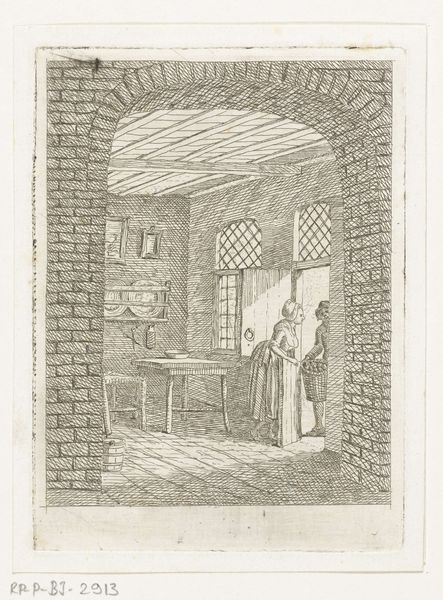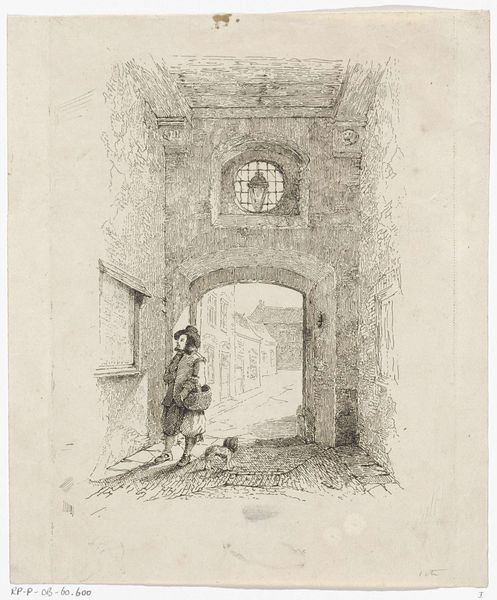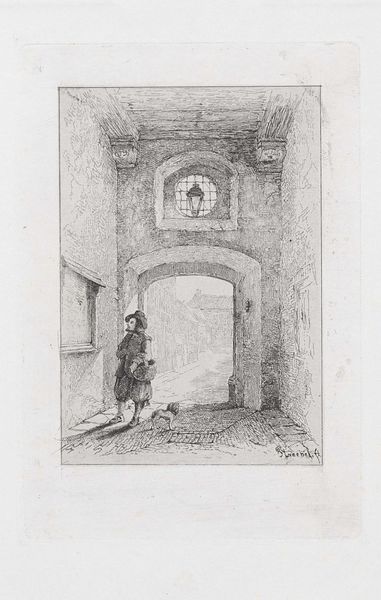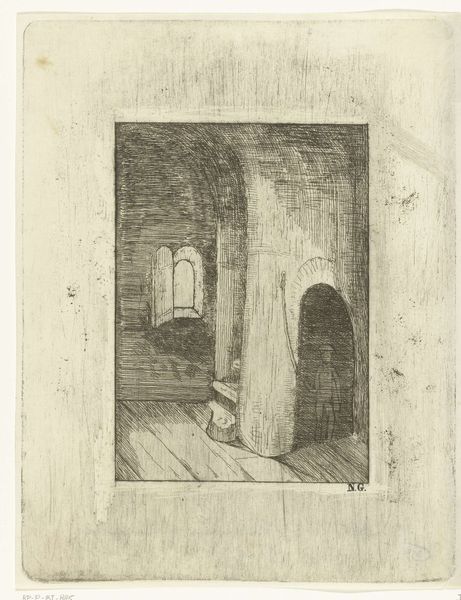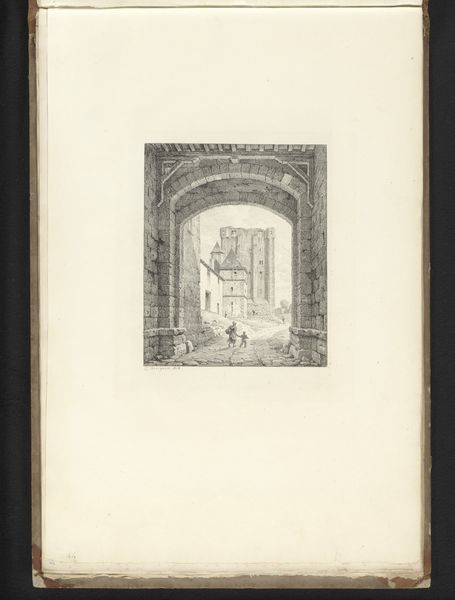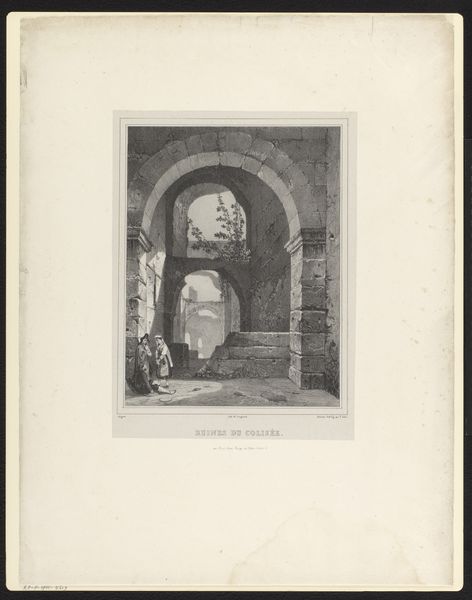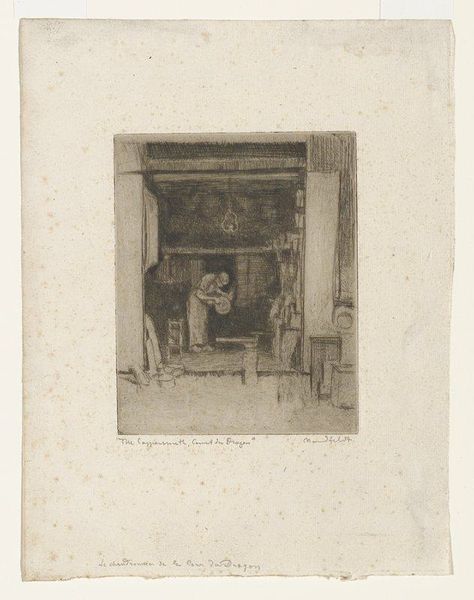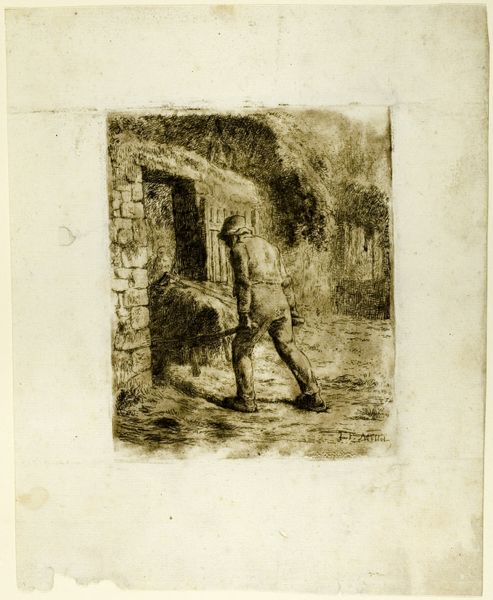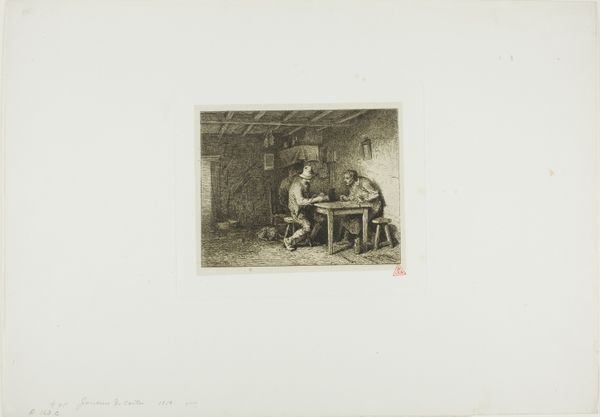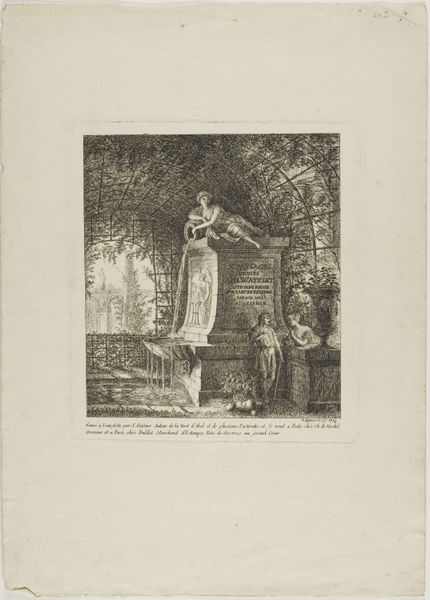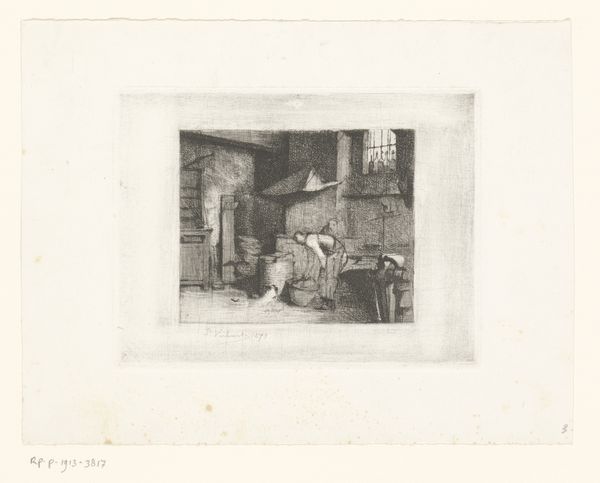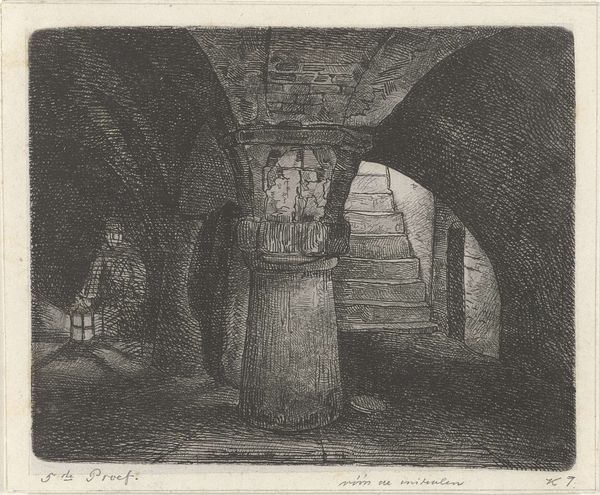
drawing, etching, ink
#
drawing
#
quirky illustration
#
shading to add clarity
#
etching
#
old engraving style
#
personal sketchbook
#
ink
#
ink drawing experimentation
#
pen-ink sketch
#
ink colored
#
pen work
#
sketchbook drawing
#
genre-painting
#
sketchbook art
#
realism
Dimensions: height 182 mm, width 137 mm
Copyright: Rijks Museum: Open Domain
Curator: Anthonie van den Bos’s “Doorkijkje met man en vrouw pratend bij de deur"—roughly translated, "View Through a Doorway with a Man and Woman Talking by the Door"— invites us into an intimate domestic scene. It's an etching, ink, and drawing combo, and thought to be made between 1778 and 1838. Editor: Oh, I love how the scene unfolds. It’s almost voyeuristic, peering through this dark, weighty archway into a lighter, lived-in space. There's a sort of stillness; the people seem caught mid-conversation, but the image crackles with subtle dynamism! Curator: Precisely! Van den Bos gives us the quiet intensity of a stolen moment. The sharp contrast in light and shadow definitely heightens the mood—suggesting the weighty concerns or everyday realities playing out in their dialogue. The arch frames the scene and invites consideration. Editor: Definitely. It's like looking at it now, are we also considering it outside and within spaces that limit freedom of movement or speech? This image evokes many stories around marginality and belonging that speak of people outside dominant power structures. In what conditions are we truly ourselves? What can an arched door even symbolize? Curator: That’s so powerful. It’s true the door invites layers of social readings. Van den Bos was known for portraying ordinary lives, focusing on their quiet beauty and struggles. This little snapshot reflects on the role of women in that moment of society. There is no one home when we consider those that work there and who are omitted. The composition is very balanced and simple with a complexity that makes one want to smile, however, its context may be problematic for how we consider value. Editor: Yes, exactly! By decentering a bourgeois male narrative in favor of the day to day we learn something much more nuanced. What feels "domestic" in those days also meant oppression and servitude for someone else! It encourages us to be aware of perspectives that matter beyond simply aesthetic experience, doesn't it? It urges us toward intersectional analysis and critical viewing. Curator: Ultimately, it’s in that space between reality and art where we find the greatest potential for self and social reflection. Van den Bos offers a glimpse. Editor: An essential task of art today, I'd argue! Art, at its best, challenges us to examine who's in the room and who’s been systematically excluded.
Comments
No comments
Be the first to comment and join the conversation on the ultimate creative platform.
